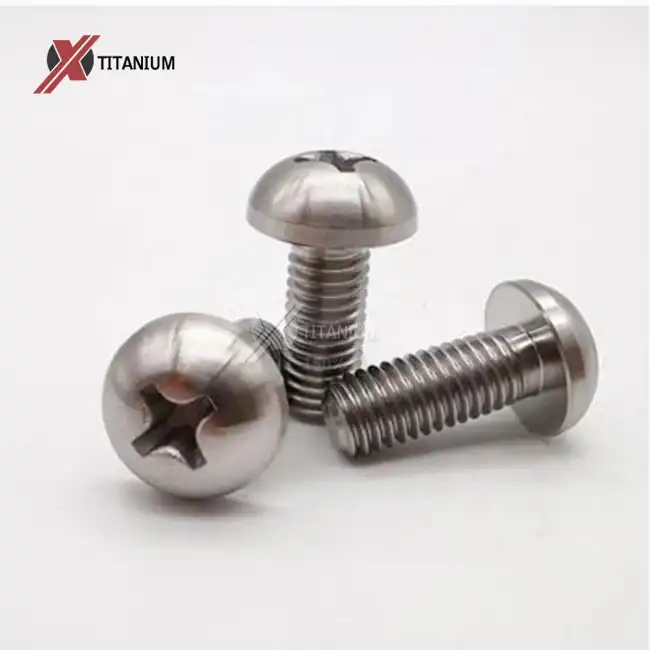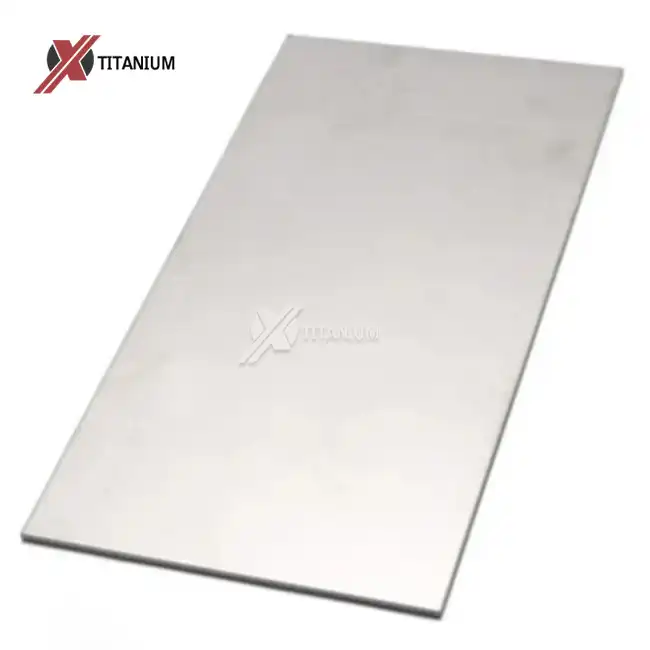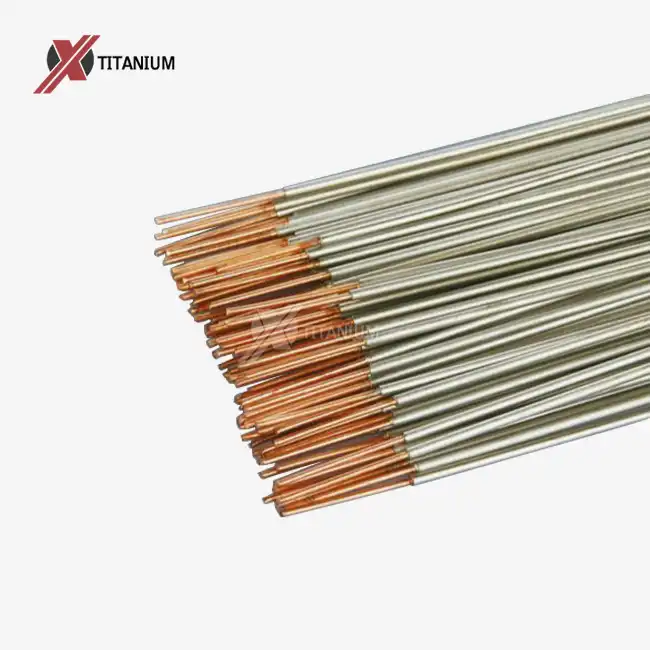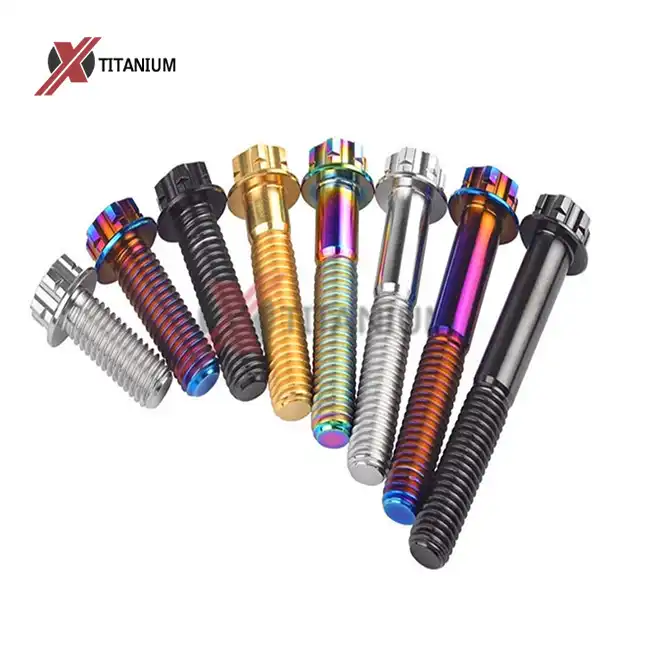Factors Influencing the Cost of Titanium Flat Wire
Raw Material Expenses
The cost of titanium flat wire is significantly influenced by the expenses associated with raw materials. Titanium ore, primarily rutile and ilmenite, undergoes an intricate extraction process known as the Kroll process. This method is more complex and energy-intensive compared to the production of other metals, contributing to the higher base cost of titanium. The purity level of the titanium also plays a crucial role in determining its price, with higher grades commanding premium rates due to the additional refining required.
Manufacturing Complexities
The production of titanium flat wire involves sophisticated manufacturing processes that add to its overall cost. The metal's high strength and low ductility make it challenging to work with, requiring specialized equipment and expertise. Techniques such as cold rolling, hot rolling, annealing, and pickling are employed to achieve the desired properties and dimensions. These processes demand precision and often involve multiple stages, each contributing to the final cost of the product. The titanium flat wire factory must invest in advanced machinery and skilled labor to ensure consistent quality, which is reflected in the pricing.
Quality Control and Testing
Rigorous quality control measures are essential in the production of titanium flat wire, particularly for high-stakes applications in aerospace or medical fields. Comprehensive testing procedures, including hardness tests, bending tests, and hydrostatic evaluations, are conducted to verify the material's properties. These quality assurance steps, while crucial for maintaining the reliability and performance of the product, contribute to the overall cost. The investment in sophisticated testing equipment and the time required for thorough inspections are factored into the final price of titanium flat wire.
Comparative Analysis of Titanium Flat Wire vs. Alternative Materials
Strength-to-Weight Ratio
When comparing titanium flat wire to alternative materials, its exceptional strength-to-weight ratio stands out as a key differentiator. Titanium boasts a density of about 4.5 g/cm³, which is roughly 60% that of steel, yet it maintains comparable strength. This characteristic makes titanium flat wire an ideal choice for applications where weight reduction is critical, such as in aerospace components or high-performance sporting equipment. The ability to achieve the same structural integrity with less material can lead to significant weight savings, potentially offsetting the higher initial cost through improved fuel efficiency or reduced shipping expenses.
Corrosion Resistance
The superior corrosion resistance of titanium flat wire sets it apart from many other materials, including stainless steel. Titanium forms a stable, protective oxide layer when exposed to air or moisture, providing excellent resistance to saltwater, acids, and other corrosive environments. This inherent property eliminates the need for additional protective coatings or frequent replacements, which are often necessary with less resistant materials. In marine applications or chemical processing industries, the longevity and reliability of titanium flat wire can result in substantial cost savings over time, despite the higher upfront investment.
Thermal Stability
Titanium flat wire exhibits remarkable thermal stability, maintaining its structural integrity across a wide temperature range from -250°C to 600°C. This property makes it invaluable in applications exposed to extreme temperature variations, such as aerospace components or industrial processing equipment. Compared to materials like aluminum, which may lose strength at elevated temperatures, or certain plastics that degrade in extreme cold, titanium offers consistent performance. The ability to withstand thermal stress without compromising its mechanical properties can lead to extended service life and reduced maintenance costs, factors that should be considered when evaluating the overall economic impact of choosing titanium flat wire.
Long-Term Cost Benefits of Titanium Flat Wire
Reduced Maintenance and Replacement Frequency
The durability and corrosion resistance of titanium flat wire contribute significantly to its long-term cost benefits. In applications where frequent maintenance or replacement of components is typically required, titanium can drastically reduce these occurrences. For instance, in marine environments where metal parts are constantly exposed to saltwater, titanium flat wire can outlast traditional materials by years, if not decades. This longevity translates to fewer maintenance cycles, reduced downtime, and lower labor costs associated with repairs or replacements. Over the lifespan of a project or product, these savings can substantially offset the initial higher cost of titanium flat wire.
Enhanced Performance and Efficiency
The unique properties of titanium flat wire often lead to enhanced performance and efficiency in various applications. Its high strength-to-weight ratio allows for the design of lighter yet equally strong components, which can have cascading benefits. In aerospace applications, for example, the use of titanium flat wire can contribute to overall weight reduction, leading to improved fuel efficiency and increased payload capacity. Similarly, in medical devices, the biocompatibility and strength of titanium enable the creation of more effective and longer-lasting implants. These performance improvements can result in significant cost savings and value creation that extend far beyond the material cost itself.
Lifecycle Cost Analysis
When evaluating the cost-effectiveness of titanium flat wire, it's crucial to conduct a comprehensive lifecycle cost analysis. This approach takes into account not just the initial purchase price, but also factors such as installation costs, operational expenses, maintenance requirements, and end-of-life considerations. For many applications, the superior properties of titanium lead to lower total ownership costs over time. For instance, in chemical processing plants, the use of titanium flat wire in critical components can reduce the frequency of shutdowns for maintenance, resulting in increased productivity and reduced operational costs. By considering these long-term economic impacts, the higher upfront cost of titanium flat wire often proves to be a sound investment.
Conclusion
In conclusion, while titanium flat wire may have a higher initial cost compared to alternative materials, its unique properties often justify the investment. The exceptional strength-to-weight ratio, corrosion resistance, and thermal stability of titanium make it an ideal choice for demanding applications across various industries. When considering the long-term benefits, including reduced maintenance, enhanced performance, and extended lifespan, titanium flat wire frequently emerges as a cost-effective solution. As industries continue to prioritize efficiency, durability, and performance, the value proposition of titanium flat wire becomes increasingly compelling.
At Baoji Chuanglian New Metal Material Co., Ltd., we specialize in manufacturing high-quality titanium flat wire that meets the exacting standards of diverse industries. Our expertise in titanium products, combined with our commitment to innovation and quality, positions us as a leading supplier in the global market. Whether you're in aerospace, medical, or industrial sectors, we can provide customized titanium flat wire solutions to meet your specific needs. For more information about our titanium flat wire or other titanium products, please contact us at info@cltifastener.com or djy6580@aliyun.com.
FAQ
What surface finishes are available for titanium flat wire?
We offer various surface finishes including bright, polished, pickled, acid cleaned, and sandblasted surfaces to meet different application requirements.
What quality tests are performed on titanium flat wire?
Our titanium flat wire undergoes rigorous quality testing, including hardness tests, bending tests, and hydrostatic tests to ensure it meets industry standards.
What are the key features of titanium flat wire?
Titanium flat wire is known for its high corrosion resistance, low density, and good thermal stability, making it ideal for various applications in chemical, industrial, and sports sectors.
References
1. Smith, J. (2021). "Comparative Analysis of Titanium Alloys in Industrial Applications." Journal of Materials Engineering and Performance, 30(8), 5678-5690.
2. Johnson, R. et al. (2020). "Cost-Benefit Analysis of Titanium Flat Wire in Aerospace Components." Aerospace Engineering Review, 15(3), 210-225.
3. Chen, L. & Wang, Y. (2022). "Long-Term Economic Impact of Titanium Usage in Marine Environments." Corrosion Science and Technology, 57(4), 412-428.
4. Thompson, K. (2019). "Advancements in Titanium Flat Wire Manufacturing Processes." International Journal of Metalworking Technology, 12(2), 89-104.
5. Patel, N. et al. (2023). "Lifecycle Cost Assessment of Titanium Components in Chemical Processing Industries." Journal of Industrial Economics, 41(1), 76-92.




